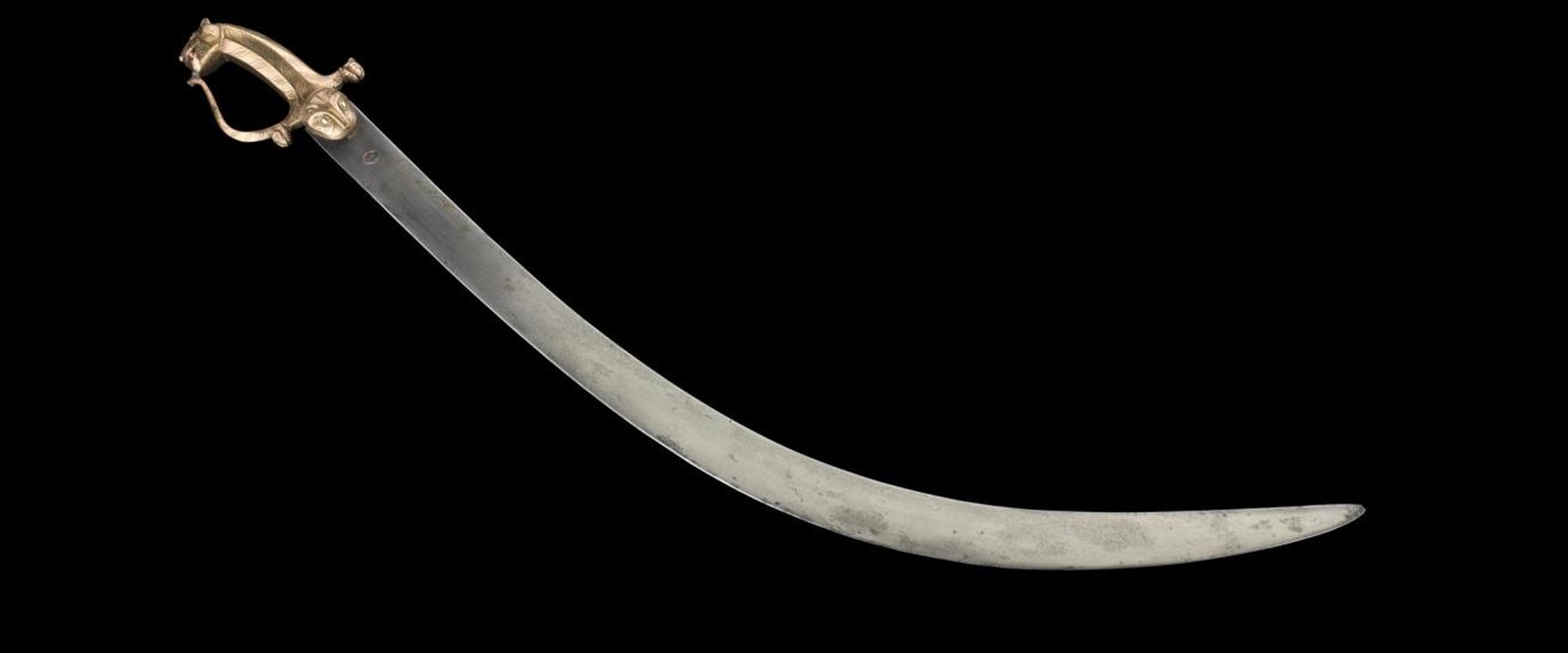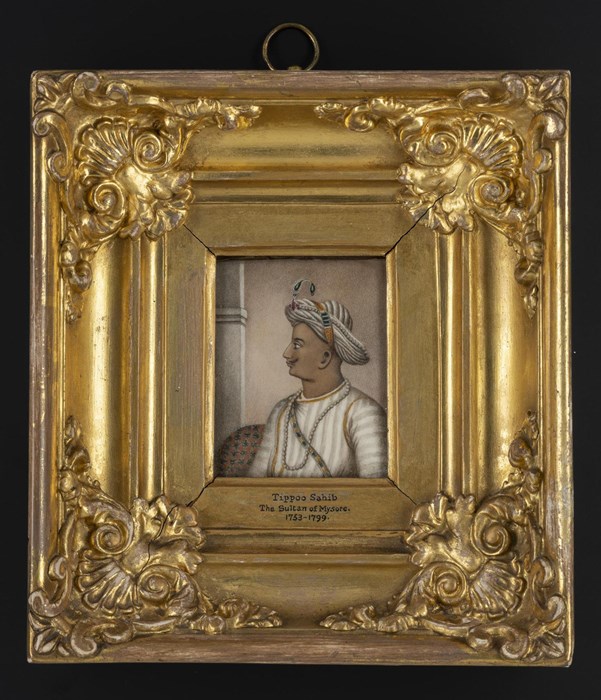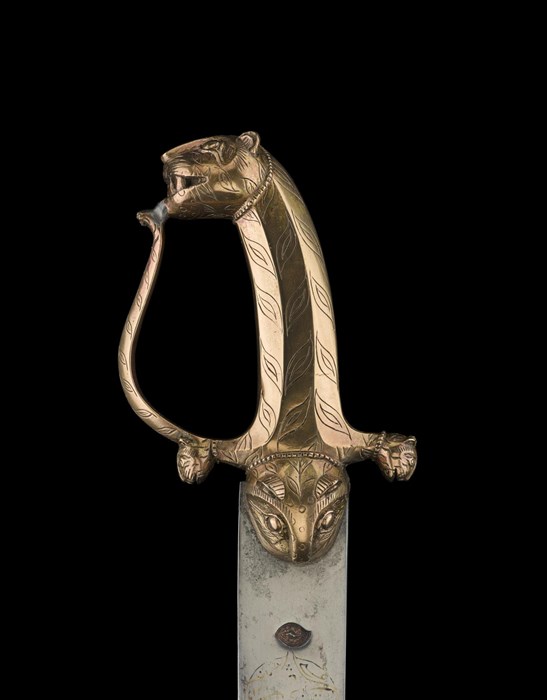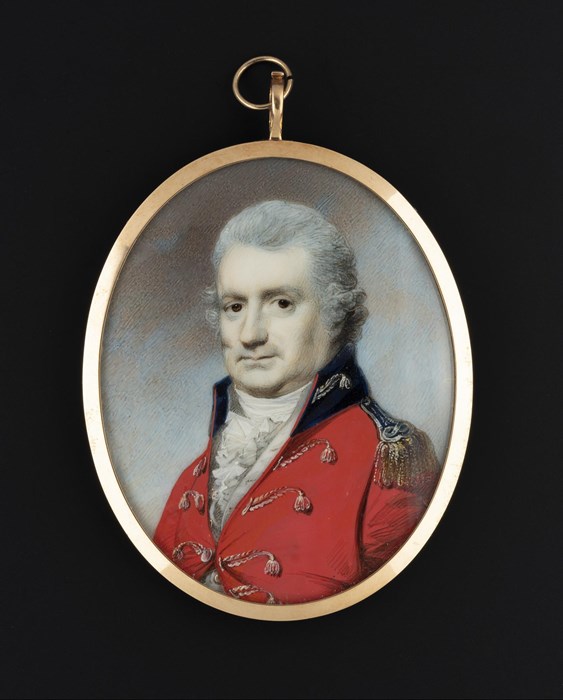Key in a search term below to search our website.
Key in a search term below to search our website.

This fine sword is believed to have been presented to Captain Aeneas Mackay by Tipu Sultan, the ruler of Mysore.
Date
c.1780–1792
Dimensions
905 mm H x 110 mm W x 40 mm D
Museum reference
On display
Gallery 1: A Nation in Arms, National War Museum
Did you know?
Due to Tipu Sultan’s use of the tiger as his personal symbol of rule, the British referred to him as the ‘Tiger of Mysore’.
‘Tipu Sultan’ (Sultan Fateh Ali Tipu, 1750-99) was the Indian ruler, or Sultan, of the Kingdom of Mysore (1782-99) who fought against the British East India Company’s ambitions for conquest of southern India in the late 18th century.

Above: Miniature painting of Tipu Sultan.
After a series of conflicts (known as the Anglo-Mysore Wars), a peace treaty was signed on 18 March 1792, ending the Third Anglo-Mysore War (1790-92). Signatories included Lord Cornwallis on behalf of the British East India Company, representatives of the Nizam (ruler) of Hyderabad, and Tipu Sultan.

Above: Sword with tiger's hilt head.
Despite this peace treaty, the British perceived Tipu Sultan to have allied against them with France, who had their own territorial ambitions in India since the 17th century. Supported by the Nizam of Hyderabad, they invaded the capital Seringapatam (now Srirangapatna), triggering the Fourth Anglo-Mysore War (1798-99). Major-General Sir David Baird (1757-1829) – who had previously been a captive of Tipu Sultan’s father Hyder Ali Khan (c. 1720-1782) for four years – led the assault. Tipu Sultan’s reign came to an end during the siege at Seringapatam Fort where he met his death at the Hoally Gateway.
Relatively little is known of Captain Aeneas Mackay. What is known is that he raised a company of Lord MacLeod’s 73rd Highland Regiment of Foot (McLeod’s Highlanders). He later transferred to a cavalry regiment of the British East India Company Army. He was wounded at Conjeveram (now Kanchipuram) during the Battle of Pollilur (1780) undertaken as part of the Second Anglo-Mysore War (1780-4). He was subsequently imprisoned by Hyder Ali, and later Tipu Sultan, in Seringapatam where he remained until 1784. After his release from captivity he returned to Scotland.

Above: Miniature Painting of Captain Mackay, on display in Gallery 5: In Defence.
Tipu Sultan had an extensive armoury, which, along with many other valuables was looted after the fall of his capital. Due to his notoriety in Britain, many of the objects acquired were said to have personally belonged to Tipu Sultan to raise their prominence.
The design of the sword includes tiger heads worked in gold and tiger stripes on the hilt. The blade bears no maker’s marks, yet there are a number of inscriptions. The inscriptions within the rosette have been identified as including the names of the four Caliphs as well as ‘God is great’ and ‘Muhammad’ in Arabic. The cartouche below the rosette identifies ‘Tipu Sultan’ as the owner of the sword (Sunset at Srirangapatam, 2000, pp. 76-77).